Abstract
BACKGROUND: Black women are more likely to have bacterial vaginosis (BV) than are non-Hispanic white women. We examined whether this disparity can be explained by racial differences in known BV risk factors. METHODS: Nine hundred black and 235 white women were enrolled from five US sites. At baseline, structured interviews were conducted and vaginal swabs self-collected for Gram-stain and culture. RESULTS: Black women were more likely than white women to have BV/intermediate vaginal flora. They also were more likely to be older, have lower educational attainment and family incomes, have a history of a sexually transmitted disease, and douche. After adjustment for demographic and lifestyle factors, blacks remained at elevated risk for BV/intermediate flora (OR 2.2, 95% CI 1.5-3.1). Blacks also were more likely to have specific BV-related vaginal microflora, as well as gonococcal or chlamydial cervicitis (OR 2.2, 95% CI 1.2-3.8) after adjustment for known BV risk factors. CONCLUSION: Risk factor differences did not explain the observed racial disparity in the occurrence of BV, BV-related microflora, or gonococcal or chlamydial cervicitis. These findings highlight our limited understanding of the factors accounting for the occurrence of bacterial vaginosis and cervicitis among black and white women.
Full text
PDF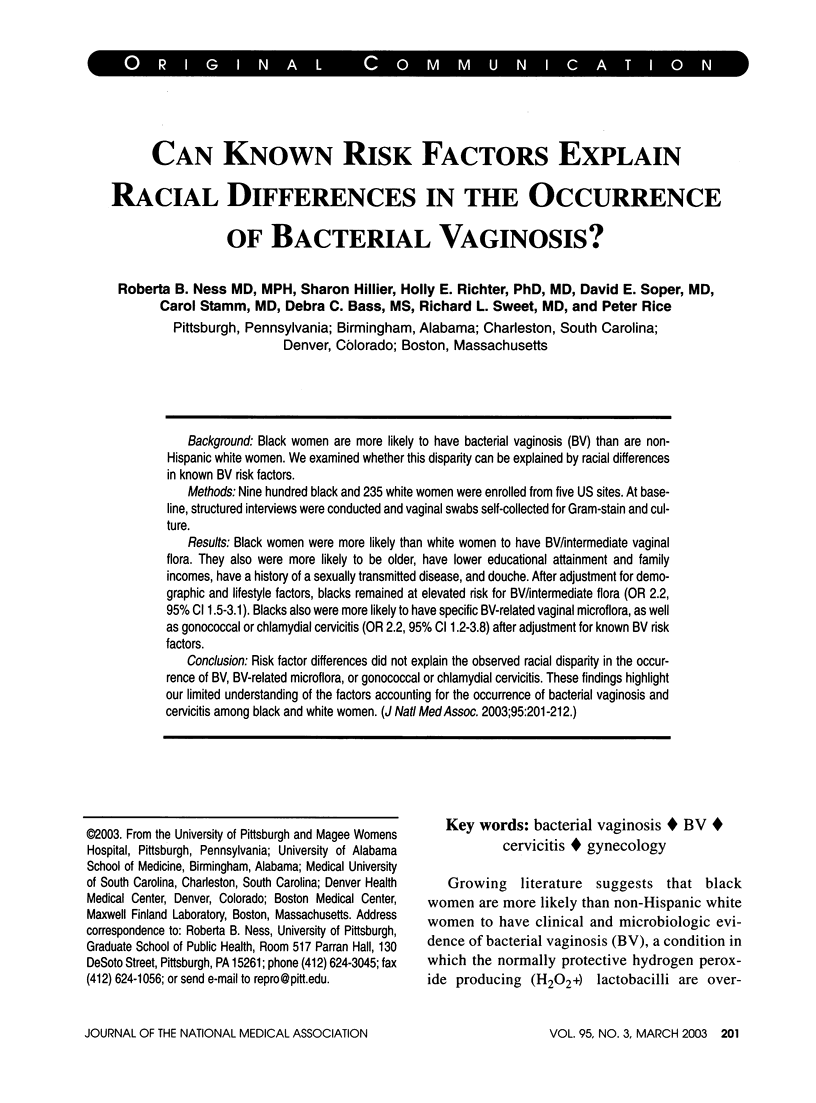
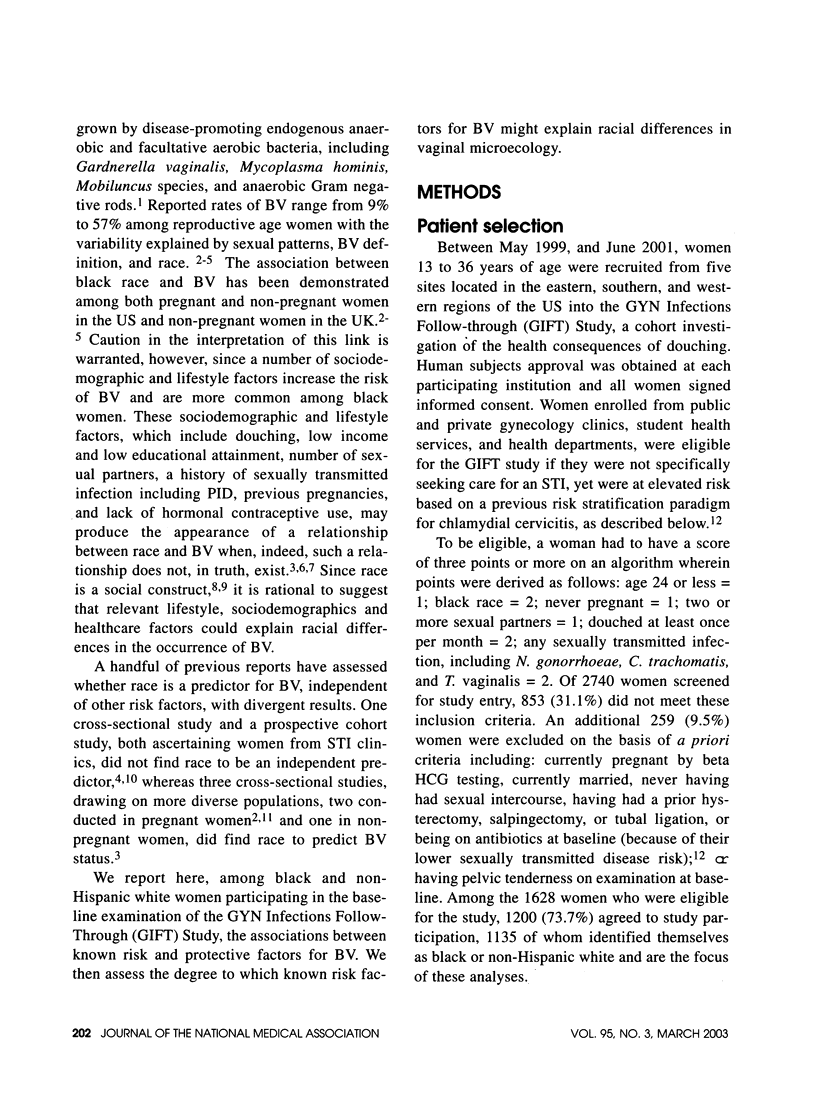

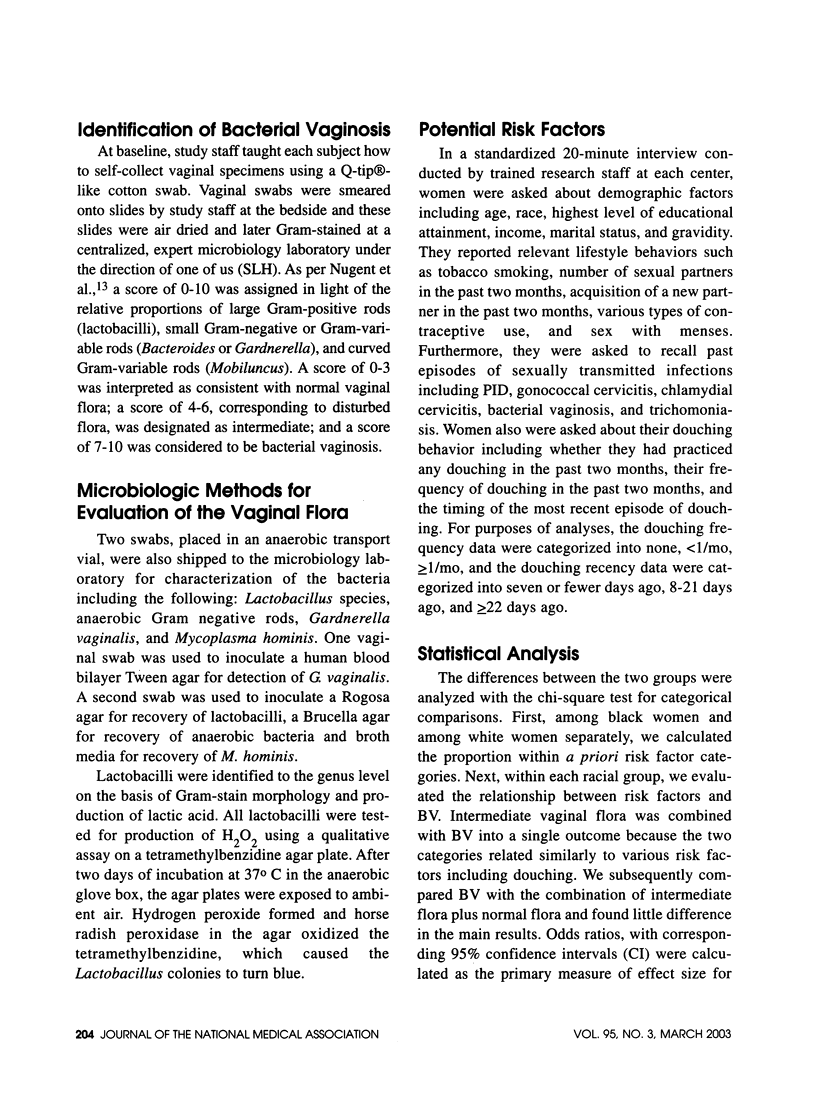

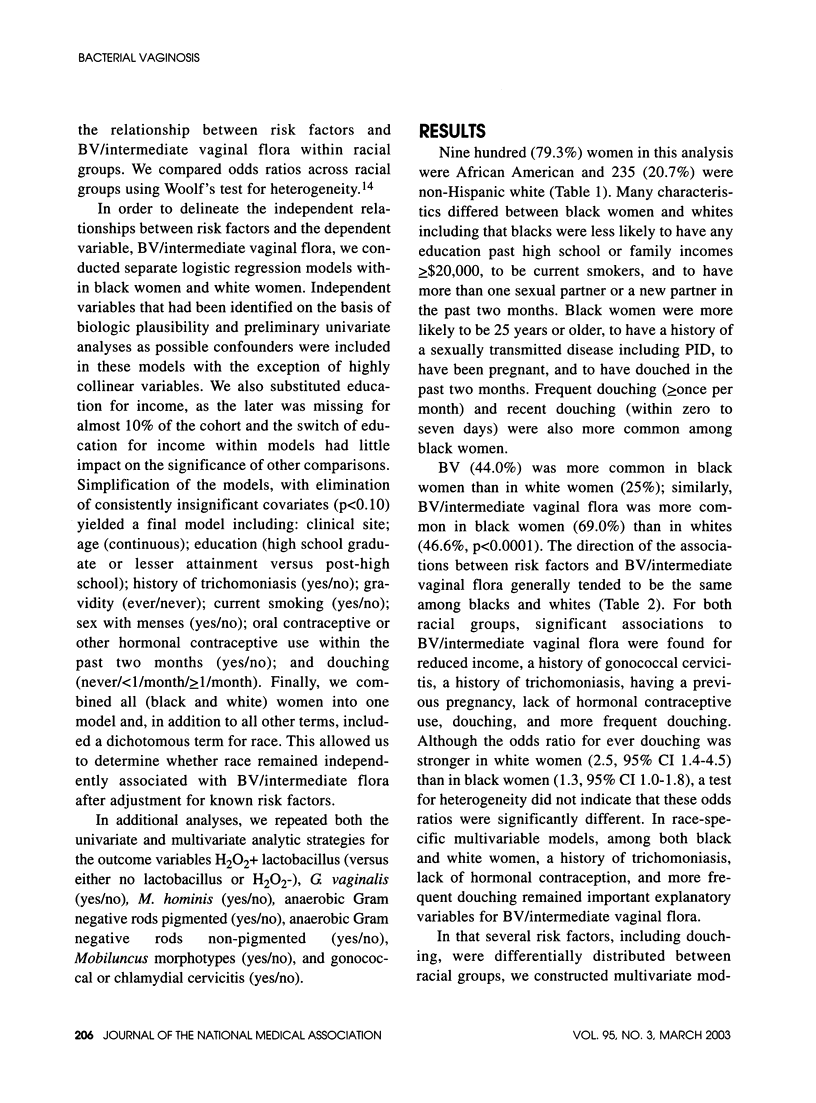
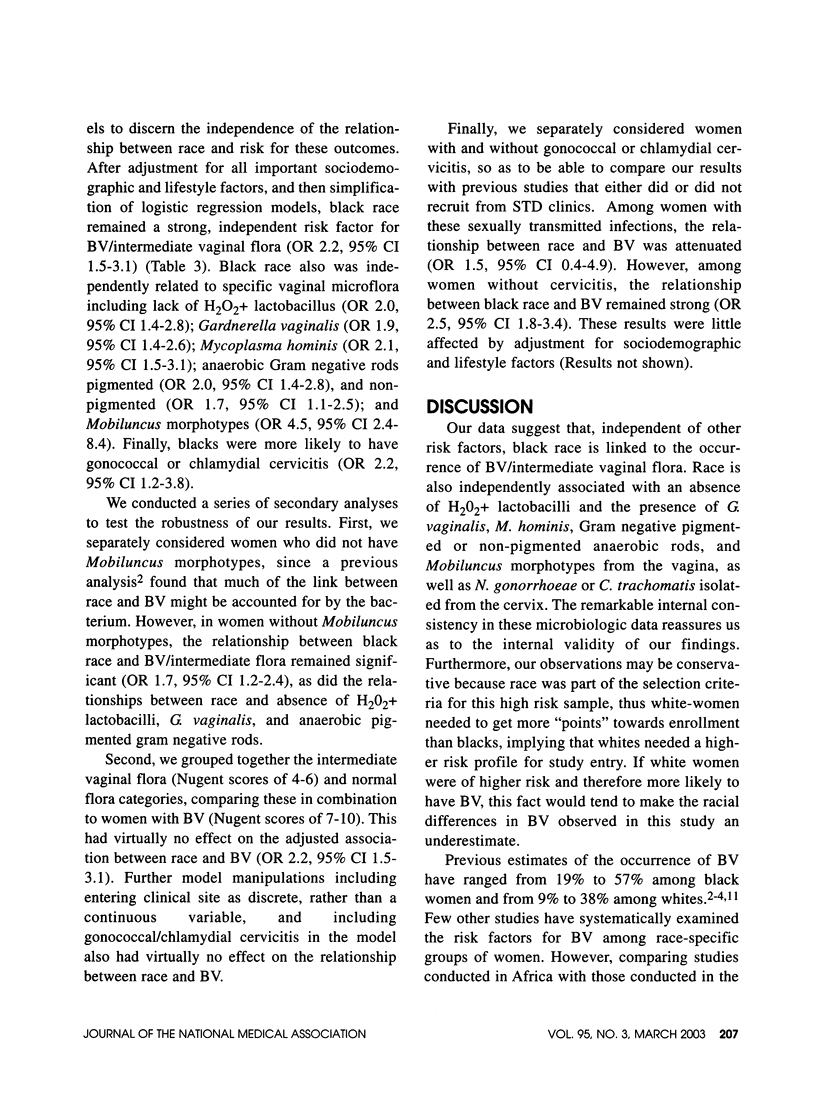
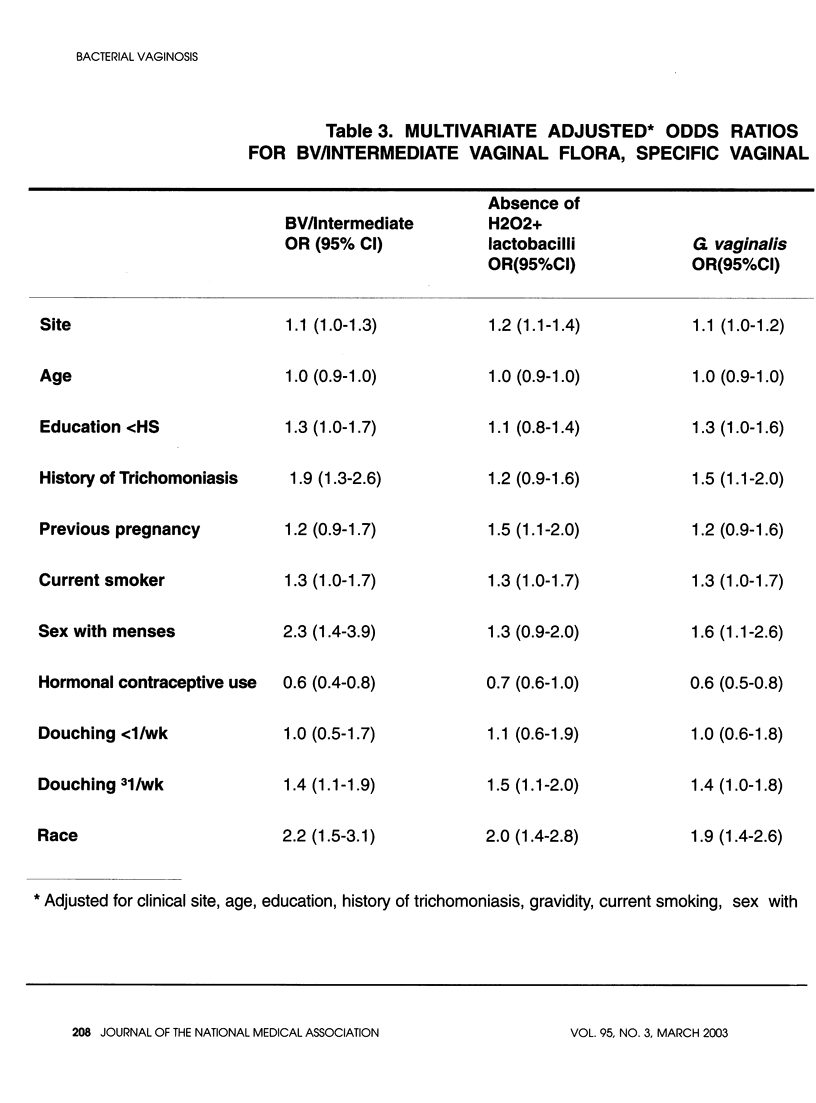
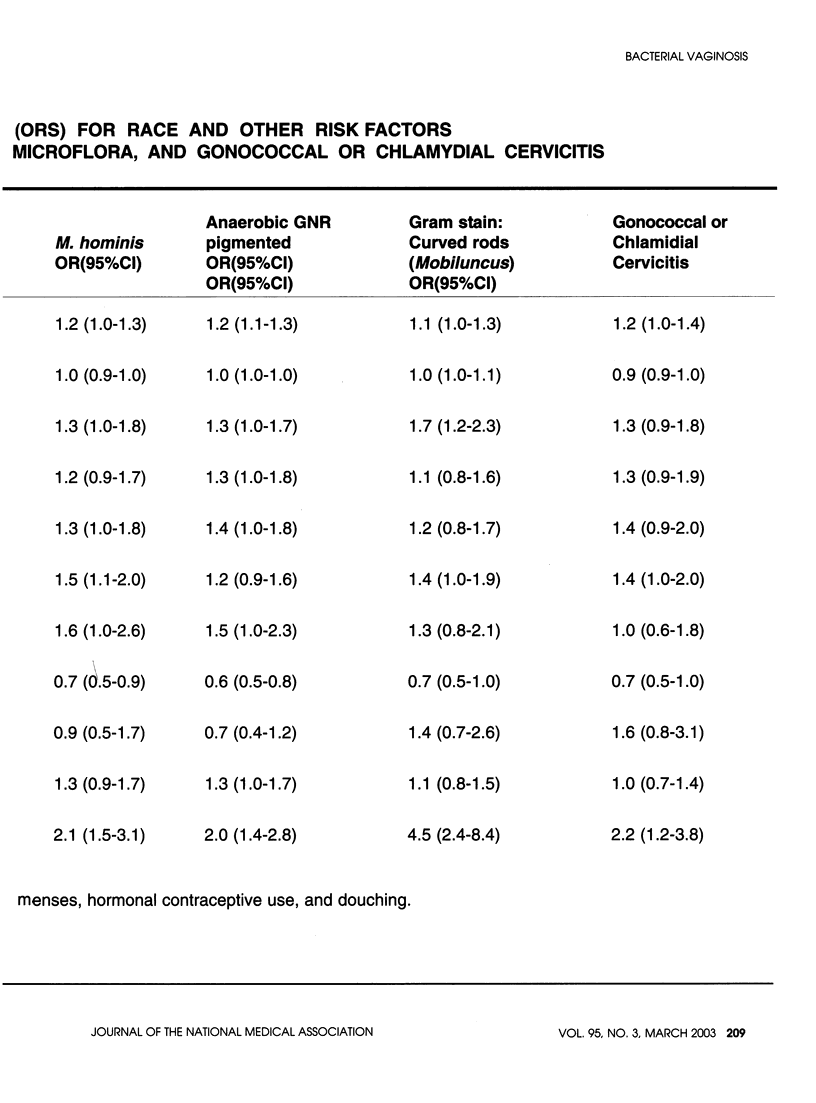
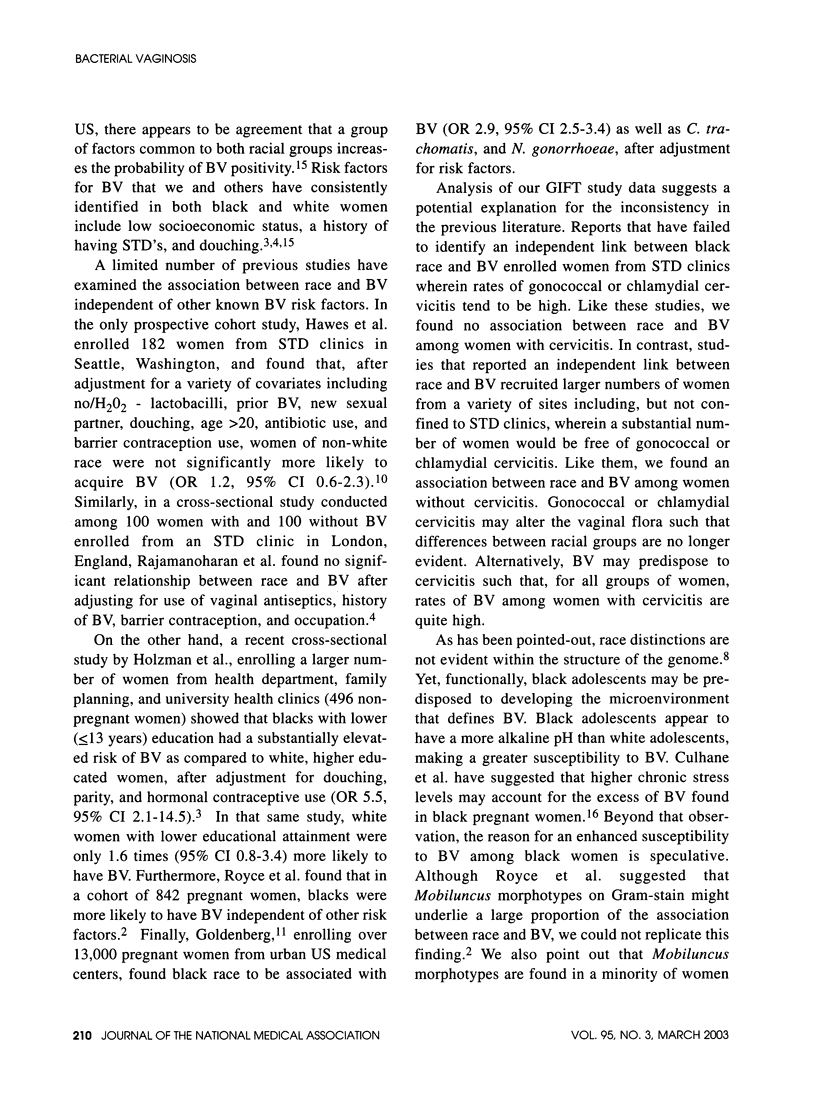
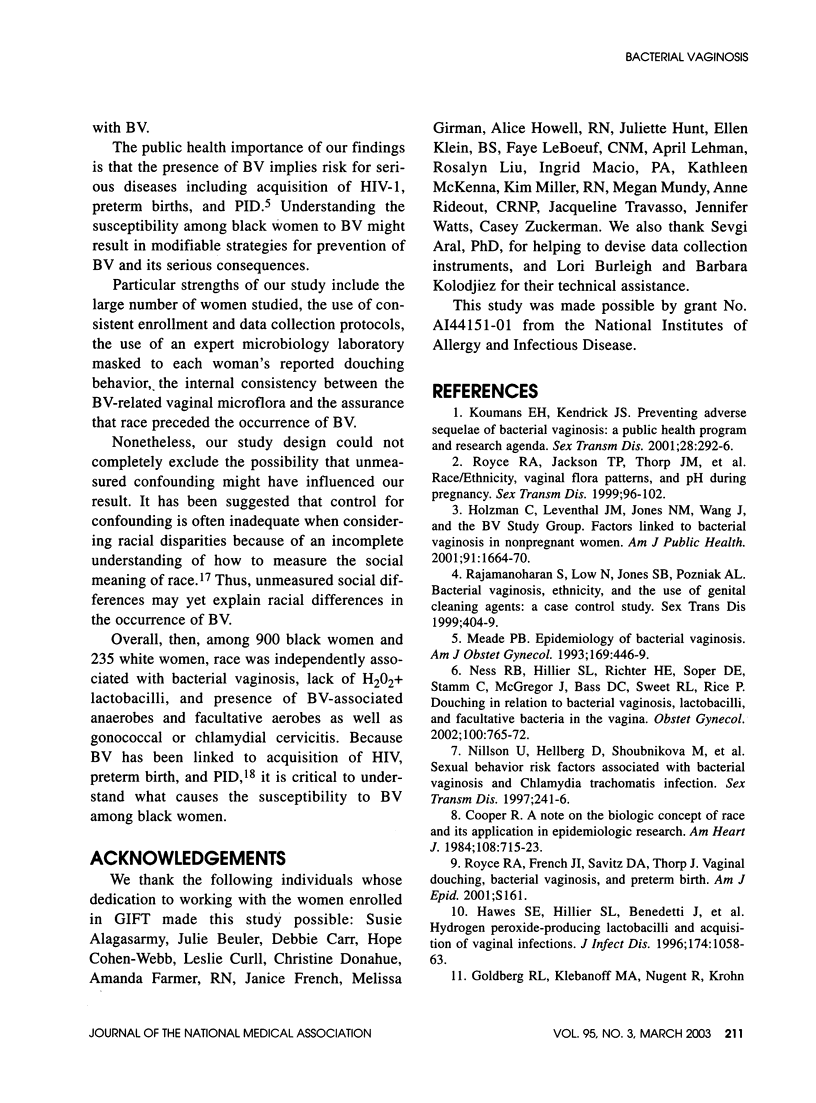

Selected References
These references are in PubMed. This may not be the complete list of references from this article.
- Cooper R. A note on the biologic concept of race and its application in epidemiologic research. Am Heart J. 1984 Sep;108(3 Pt 2):715–722. doi: 10.1016/0002-8703(84)90662-8. [DOI] [PubMed] [Google Scholar]
- Culhane J. F., Rauh V., McCollum K. F., Hogan V. K., Agnew K., Wadhwa P. D. Maternal stress is associated with bacterial vaginosis in human pregnancy. Matern Child Health J. 2001 Jun;5(2):127–134. doi: 10.1023/a:1011305300690. [DOI] [PubMed] [Google Scholar]
- Fonck K., Kaul R., Keli F., Bwayo J. J., Ngugi E. N., Moses S., Temmerman M. Sexually transmitted infections and vaginal douching in a population of female sex workers in Nairobi, Kenya. Sex Transm Infect. 2001 Aug;77(4):271–275. doi: 10.1136/sti.77.4.271. [DOI] [PMC free article] [PubMed] [Google Scholar]
- Goldenberg R. L., Klebanoff M. A., Nugent R., Krohn M. A., Hillier S., Andrews W. W. Bacterial colonization of the vagina during pregnancy in four ethnic groups. Vaginal Infections and Prematurity Study Group. Am J Obstet Gynecol. 1996 May;174(5):1618–1621. doi: 10.1016/s0002-9378(96)70617-8. [DOI] [PubMed] [Google Scholar]
- Hawes S. E., Hillier S. L., Benedetti J., Stevens C. E., Koutsky L. A., Wolner-Hanssen P., Holmes K. K. Hydrogen peroxide-producing lactobacilli and acquisition of vaginal infections. J Infect Dis. 1996 Nov;174(5):1058–1063. doi: 10.1093/infdis/174.5.1058. [DOI] [PubMed] [Google Scholar]
- Holzman C., Leventhal J. M., Qiu H., Jones N. M., Wang J., BV Study Group Factors linked to bacterial vaginosis in nonpregnant women. Am J Public Health. 2001 Oct;91(10):1664–1670. doi: 10.2105/ajph.91.10.1664. [DOI] [PMC free article] [PubMed] [Google Scholar]
- Koumans E. H., Kendrick J. S., CDC Bacterial Vaginosis Working Group Preventing adverse sequelae of bacterial vaginosis: a public health program and research agenda. Sex Transm Dis. 2001 May;28(5):292–297. doi: 10.1097/00007435-200105000-00011. [DOI] [PubMed] [Google Scholar]
- Mead P. B. Epidemiology of bacterial vaginosis. Am J Obstet Gynecol. 1993 Aug;169(2 Pt 2):446–449. doi: 10.1016/0002-9378(93)90338-j. [DOI] [PubMed] [Google Scholar]
- Mead P. B. Epidemiology of bacterial vaginosis. Am J Obstet Gynecol. 1993 Aug;169(2 Pt 2):446–449. doi: 10.1016/0002-9378(93)90338-j. [DOI] [PubMed] [Google Scholar]
- Ness Roberta B., Hillier Sharon L., Richter Holly E., Soper David E., Stamm Carol, McGregor James, Bass Debra C., Sweet Richard L., Rice Peter. Douching in relation to bacterial vaginosis, lactobacilli, and facultative bacteria in the vagina. Obstet Gynecol. 2002 Oct;100(4):765–765. doi: 10.1016/s0029-7844(02)02184-1. [DOI] [PubMed] [Google Scholar]
- Nilsson U., Hellberg D., Shoubnikova M., Nilsson S., Mårdh P. A. Sexual behavior risk factors associated with bacterial vaginosis and Chlamydia trachomatis infection. Sex Transm Dis. 1997 May;24(5):241–246. doi: 10.1097/00007435-199705000-00001. [DOI] [PubMed] [Google Scholar]
- Nugent R. P., Krohn M. A., Hillier S. L. Reliability of diagnosing bacterial vaginosis is improved by a standardized method of gram stain interpretation. J Clin Microbiol. 1991 Feb;29(2):297–301. doi: 10.1128/jcm.29.2.297-301.1991. [DOI] [PMC free article] [PubMed] [Google Scholar]
- Rajamanoharan S., Low N., Jones S. B., Pozniak A. L. Bacterial vaginosis, ethnicity, and the use of genital cleaning agents: a case control study. Sex Transm Dis. 1999 Aug;26(7):404–409. doi: 10.1097/00007435-199908000-00008. [DOI] [PubMed] [Google Scholar]
- Royce R. A., Jackson T. P., Thorp J. M., Jr, Hillier S. L., Rabe L. K., Pastore L. M., Savitz D. A. Race/ethnicity, vaginal flora patterns, and pH during pregnancy. Sex Transm Dis. 1999 Feb;26(2):96–102. doi: 10.1097/00007435-199902000-00007. [DOI] [PubMed] [Google Scholar]
- Stergachis A., Scholes D., Heidrich F. E., Sherer D. M., Holmes K. K., Stamm W. E. Selective screening for Chlamydia trachomatis infection in a primary care population of women. Am J Epidemiol. 1993 Aug 1;138(3):143–153. doi: 10.1093/oxfordjournals.aje.a116840. [DOI] [PubMed] [Google Scholar]
- Wise P. H. Confronting racial disparities in infant mortality: reconciling science and politics. Am J Prev Med. 1993 Nov-Dec;9(6 Suppl):7–16. [PubMed] [Google Scholar]


